A new pocket park has appeared in Farringdon, replacing a former bland paved plaza with plants, seats and some interesting pocket hills to climb up.
This new pocket park comprises a number of sustainable drainage systems (SuDS) features that are designed to capture surface water flow in an area that was previously completely paved over. The pocket park has replaced the previously impermeable pavement with permeable paving and surrounding vegetation and surface water is now redirected from the sewer network into the rain garden.
The aim of the pocket park, apart from the aesthetic and wildlife benefits, is to slow the flow of water into drains so that the gutters aren’t overwhelmed during heavy rain. According to the sign next to the park, the water absorbing capacity of this modest sized park is equivalent to 220 baths, and that’s because sitting underneath are large crates filled with soil to absorb the rainwater.
The location of the pocket park was chosen partly because the wide expanse of paving was rather unpleasant, but sitting next to Mount Pleasent, it also happens to be right above the lost Fleet River.
Running through the area, linking the different patches of the park is a blue brick path, with some text in the bricks: “That washed the clothes and turned the mills Where children drank and salmon swam And wells were holy”
It’s a line from a poem by U.A Fanthorpe called Rising Damp.
The text was originally going to say “the Filths of all hues and odours seem to tell, what street they sail’d from by their sight and their smell”, but it seems someone somewhere decided a more wholesome message would be nicer.
Some bright yellow seats are dotted around, but arguably one of the more curious additions are some mini hills that rise up out of the red tarmac. It seems that skateboarders rather like them so the council might remove them because gods forbid that people might enjoy themselves sometimes.
The park might have a problem in one of the newly planted areas, as the plants seem to have all died, and been replaced with a large flock of pigeons. There were a couple of trees in the site already, but they’ve also added a new apple tree and a couple of river birches to the pocket park to give it some height, and eventually shade.
A prominent piece of art is the graphic design on the electricity cupboards, but a less obvious one are the small metal plaques in the ground. Almost too easy to miss, but once you spot one, it becomes a bit of a compulsion to find them all.
Compared to what the area looked like before, just a triangle of paving slabs, the pocket park is a considerable improvement, but learning that it was also designed to act as a water sponge to reduce flooding adds to the pleasure of seeing it.
The works were supported by funding awarded from the Thames Water Surface Water Management Programme and the Council. The landscape architect was Land Use Consultants.

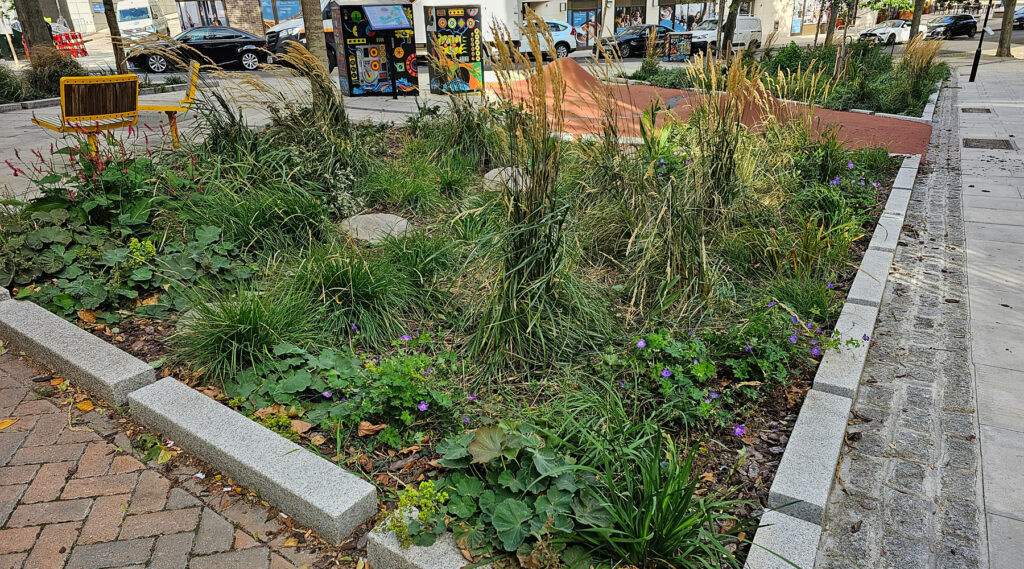
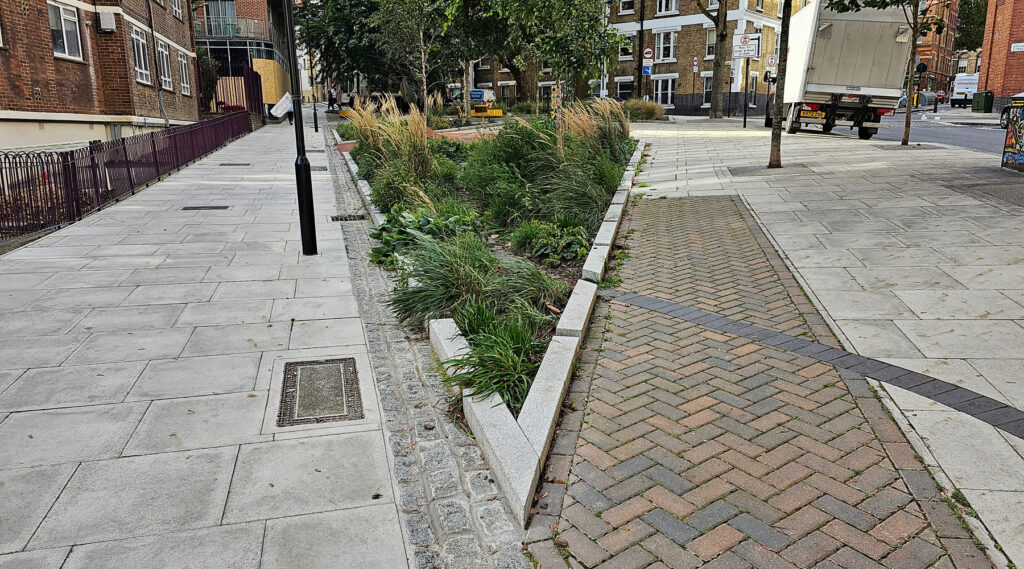
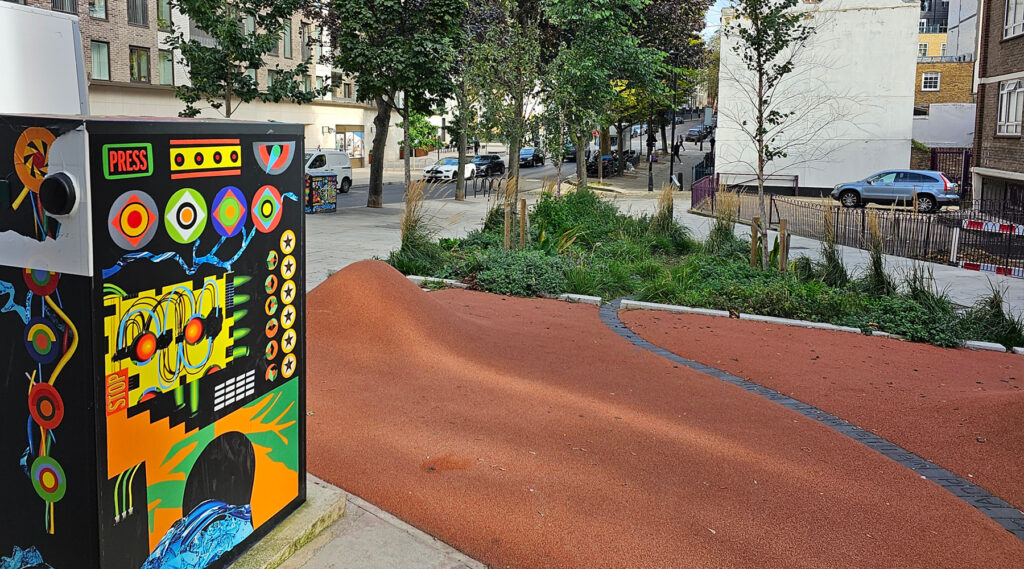
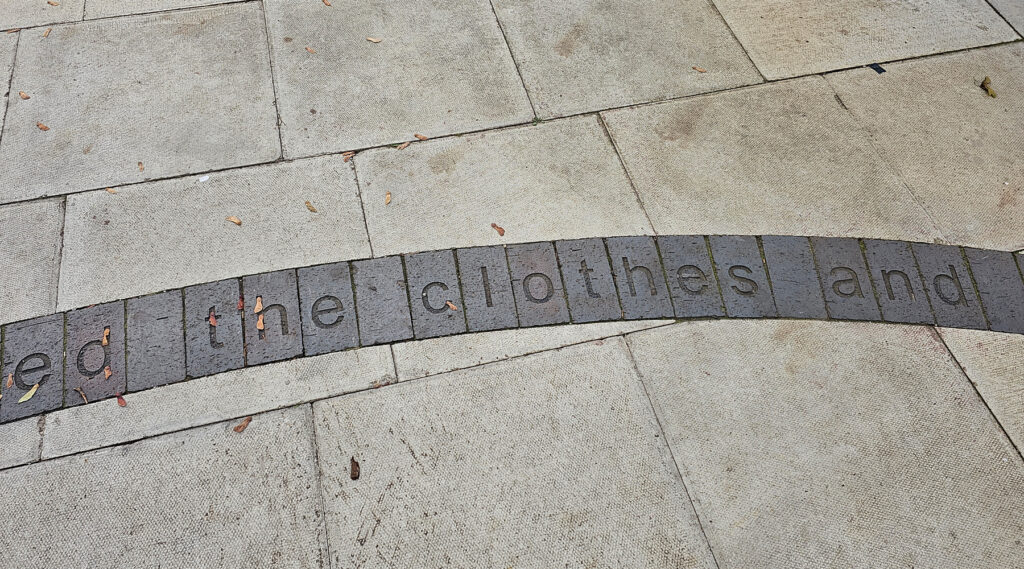
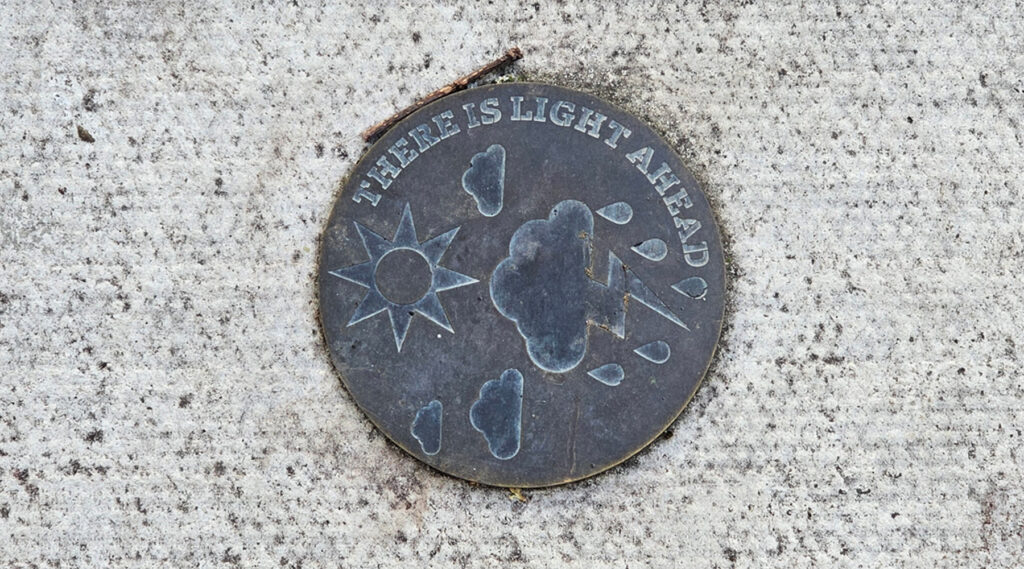
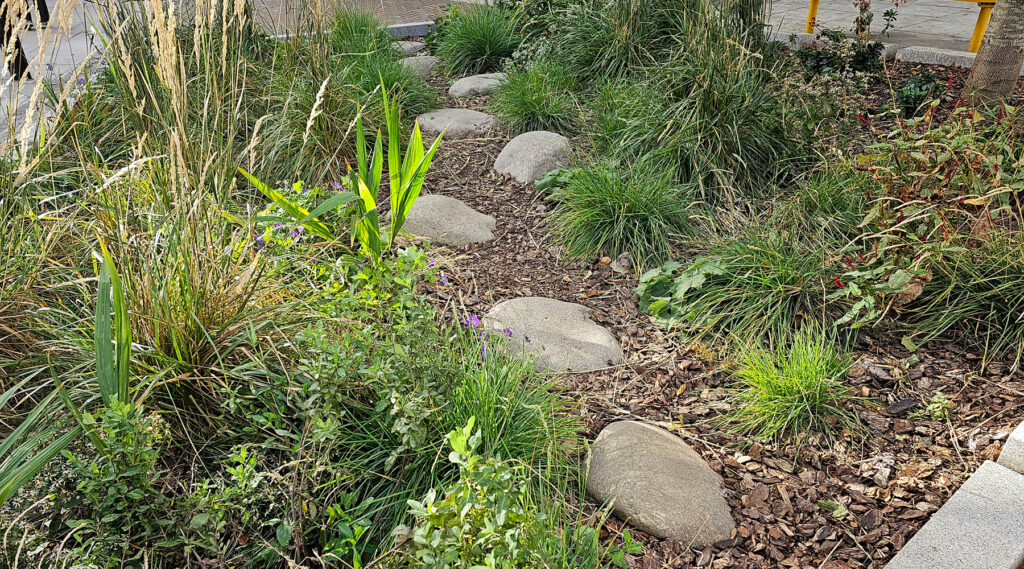






Doesnt look as if much has improved since Fanthorp’s day from the photos, which are usually a good reflection of the site.
It’s changed a huge amount in the past few years, take a look at the archive on Google Street View if you want confirmation.